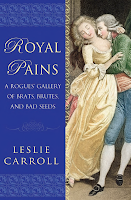In Honor of Halloween: What Scares You?

I'm not a fan of horror movies---you know the chase-em and chop-em up kind of scream/shock movies that are just violent for the sake of being violent. Hate em in fact. Boring, abusive, and I admit I've never seen a whole one. I do, however, enjoy a good Gothic romance, with a big old haunted mansion and ghostly dead (or sometimes not so dead) first wife in the attic. I also like the spooky grave side scene in Wuthering Heights (poor, crazy Heathcliff), and I even quite enjoyed the oldie "The Ghost and Mrs. Muir." Truly, a love story like no other. I am also always interested in the history, the ghostly history, of battlefields, old houses and castles, maybe because the ghosts are from long ago and there is a human element to the story I can relate to as a historical writer---great loves and losses, tragedy and triumph, with heroes and heroines who were real. Civil war ghost stories draw me in. Civil war and Victorian ghost and sightings are so sad (particularly of wom...










